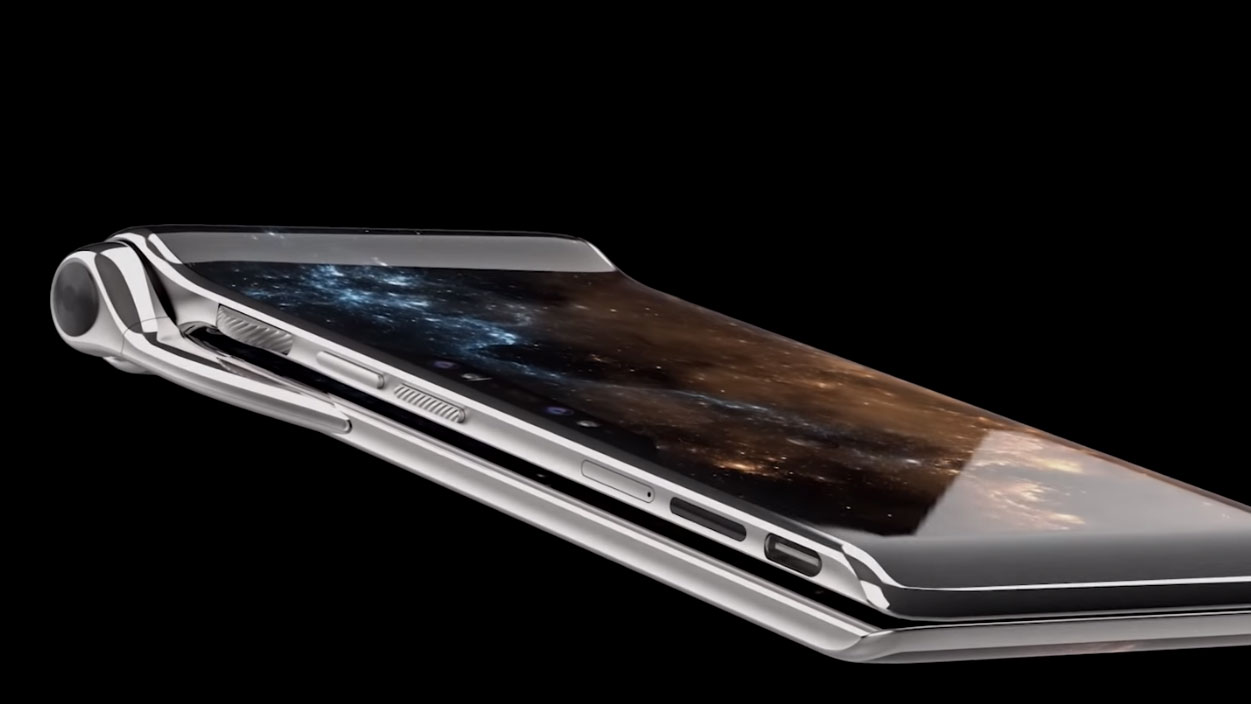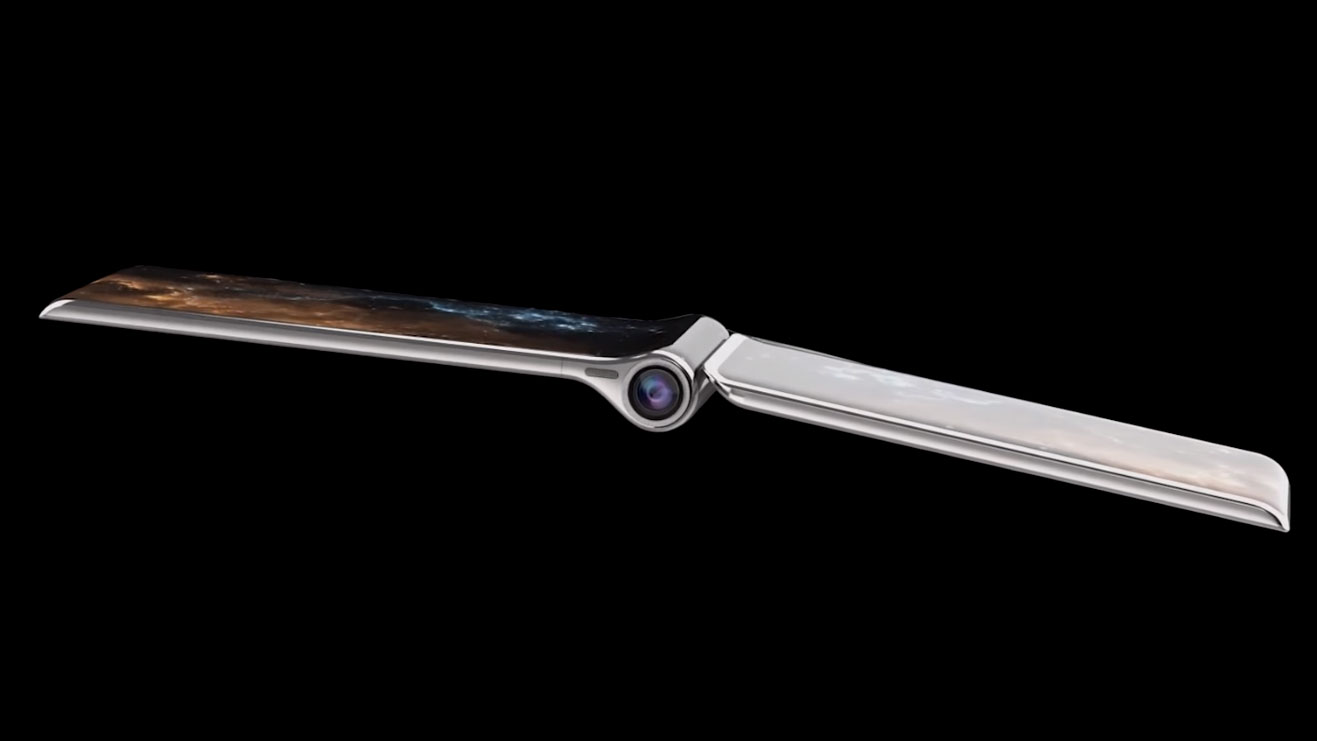We've learned from our mistakes and can make HubblePhone a reality, says Turing CEO
We sit down with Turing Space Industries' Syl Chao

It's human nature to be skeptical of things that appear too good to be true, but in the case of Turing Robotic Industries – now going by the even grander name of Turing Space Industries – that skepticism is arguably warranted.
The company unveiled its ground-breaking liquid metal Turing Phone a few years ago, promising end-to-end encryption in a super-tough frame. Turing asked for money up front and took around 2,000 orders, but after serious delays, many asked for refunds; in the end, only 900 units were launched, some of which were plagued with performance and build quality problems.
Undeterred, Turing bounced back with two ambitious new phone concepts: the Appassionato and Cadenza. But the contract with a manufacturing partner was terminated, leaving both projects in limbo.
Despite this rather checkered history, Turing is far from dead; in fact, the company has just announced its most innovative product yet, the HubblePhone.
This multi-screened smartphone looks quite unlike anything the industry has seen previously, and if Turing CEO Syl Chao's bold vision comes to fruition, it could change the way you interact with your phone forever.

Space, man
"The HubblePhone uses a titanium aluminide frame with the traditional Turing liquid metal; both are space metal technologies," Chao tells us when we ask why the company has ditched 'Robotic' for 'Space' in its branding.
"Secondly, the Hubble Screen – the one that goes around the top – is an industry first; the ability to view the galaxy in 3D form – not in 'naked eye' 3D, but actually revolving around the top of the screen – makes it a truly space-age phone."
Get daily insight, inspiration and deals in your inbox
Sign up for breaking news, reviews, opinion, top tech deals, and more.
It's inspirational stuff, but then we've been used to that from Turing. What makes the Hubble Phone any different from the vaporware Appassionato and Cadenza?
"The number one cause for the failure of a phone product is trying to assemble it all yourself," Chao replies. "This time, we're giving it to the experts, the same ones that built the iPhone. We have a very close working relationship with Foxconn.
"Utilizing their testing capabilities, lab equipment and certification experience, we'll make sure the product is properly built and properly certified before it reaches the consumers."
Understanding the HubblePhone
Assuming Turing learns from its mistakes there are still some big questions to answer; for example, when other companies have sought to streamline smartphone interaction on a single screen, what advantage is there in having three?
"Let me give you an example," responds Chao. "We're going to have a great HD video editing tool, so imagine a mobile phone that could use a program as powerful as Adobe Premiere. You can't use that properly on modern smartphones because you only have one screen and therefore limited viewing space. On the HubblePhone, you can preview your edited video while you access all the tools on another screen.
"Also, I'm sure you've encountered issues when you're using an app and you have to switch to another app on the same screen; it's not an elegant process. With multiple screens, you don't have to do that; you physically turn the HubblePhone around to access other apps without having to close the previous one.
"The ingenious design of the HubblePhone – with its 'upper deck' and 'main deck' – allows you to operate a particular app while you're accessing another application on the other deck. This is true multi-tasking for mobile."

Different as that sounds, the notion of a device which offers multiple viewpoints on your mobile life seems almost boring compared to the plans Turing has for 'Emotional Machine Intelligence', or EMI as the company calls it.
"We worked with a company in New York – I can't name who they are right now – and they built the EMI processing unit, a special chip that can process human emotions and turn them into machine emotions using Wave computing," explains Chao.
"The HubblePhone uses its camera to see the facial expressions of the user and transcribes that into machine intelligence. Say you're playing a game and you encounter an AI character; if that character is able to process human emotions and feedback convincing emotions, the game will be a lot more interesting – it will be like playing with another player."
And these aren’t the only innovations. Turing has stated that the HubblePhone will incorporate not one but two Snapdragon 855 chipsets – silicon that is expected to debut at the end of 2018.
Given that the HubblePhone has a projected 2020 release window and will cost an eye-watering $2,749 / £2,113, isn't Chao concerned that by the time the HubblePhone launches, the 855 will be old news?
"Given the history of Snapdragon 835 and 845, we know for sure that the 855 will require more time to tune," he replies.
"The leap from the 845 to the 855 is a major one, not just in terms of the chip wafer size, which will shift from 10 to 7 nanometers, but also because the 855 will have a 5G modem. Moving from 4G to 5G is a big jump, so in order to comply with all of the 5G radio standards, development time will, of course, be longer.
“Even if the chip is out by the end of this year, we are not expecting to see a Snapdragon 855 phone available anywhere in the world before summer 2019, and even if it happens, it will be very low in volume. Massive volume of 855 will likely happen at the end of 2019, if not early 2020 – and by early 2020, our phone will be ready as well."

Chao is also quick to point out that the HubblePhone won't use a single chip, like most smartphones. "We have two Snapdragon 855s working together, so that's twice the power of a single chip," he says with a smile.
"I wouldn't worry about the chipset we're using, or the price for that matter – what we're asking for is relatively cheap considering the number of screens, the number of chips, the ground-breaking materials and the uniqueness of the design."
The original Turing Phone was supposed to use Android, but the software was switched to the little-known Sailfish OS halfway through production.
The bad news is that the HubblePhone won't be using Android either, but there will be some degree of compatibility. "It's true that we had issues with the older Turing Phone that wasn't able to run traditional Android apps," laments Chao.
"Therefore, by implementing Android and Sailfish, we're able to be backwards compatible with existing apps while giving those extra 'Hubble' features for interactions, using the power of the open-source OS FreeBSD – which we will adapt as our own Keplerian OS."
You might assume that Chao is fresh out of bold claims by this point, but there's more in the form of the device's AR and VR capabilities.
"The easiest way to explain this is to use the example of the Nintendo 3DS," Chao says. "It has 'naked eye' 3D and cameras that project AR onto your immediate environment. We intend to do the same thing with the HubblePhone, but far, far more advanced.
“Although Apple has the ARKit and Google has ARCore, I don't think there's that one device out there which is capable of running all of the major features of these tool kits. We're aiming to blend machine intelligence and AR."
Bold dreams, or a recurring nightmare?
The HubblePhone sounds too fantastical to be true, and Turing's track record is very much against it.
Chao admits that in the past, he has aimed high with his ambitious plans, but is adamant that lessons have been learned and the groundwork is very much in place to make HubblePhone a solid reality – something that, lest we forget, the company did achieve with the original Turing Phone, albeit a little behind schedule.
"This time, we're going to do it right," Chao says. "We're outsourcing testing and assembly and we're teaming up with a Finnish company called Haltian, which consists of 85 senior engineers from the former Nokia base, working in both hardware and software."
It should come as no great shock to learn that Turing's plans for raising the funds required to build this device are almost as visionary as the phone itself. "Obviously we would need a lot more funding than we currently have to realize this project," admits Chao.
"This would be the first time we've had to seek venture capital, but this time we're doing it a little differently. We'd ask participants to use crypto tokens – Bitcoin in our case – to support the ideas of realizing the HubblePhone. We've done the most difficult part already – realizing this design and knowing that it's feasible."
For those who followed the unfolding of the Turing Phone saga there's a good chance that the company's next bold venture will elicit hoots of derision rather than genuine excitement and interest, and Chao is realistic enough to know that prior form counts in this industry.
"I know there are many customers who have been disappointed in Turing," he says. "But it is also worth noting that Turing did deliver – admittedly, much later than planned – a sophisticated and elegant phone, and we have many satisfied customers to prove it."
Whether or not shipping 900 phones can be considered a success is up for debate, but one thing is certain: the HubblePhone is Turing's make-or-break moment.
- The Samsung Galaxy X is another ambitious project